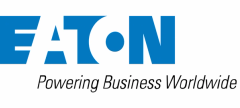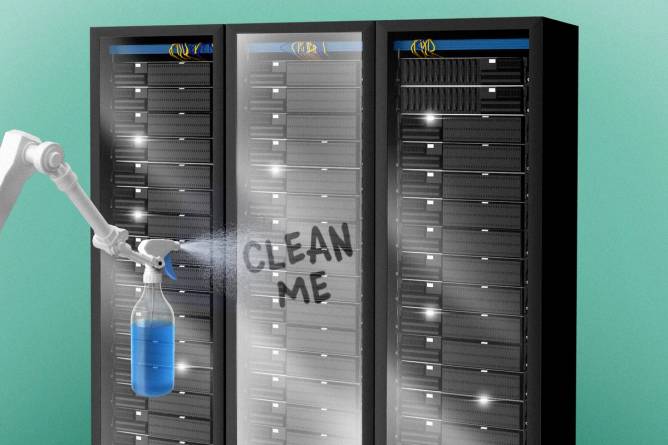Three-day weekend Friday! What do you have planned for the holiday, and does it involve cleaning up your kitchen?
In today’s edition:
 B2B VR B2B VR
 Automated adventure Automated adventure
 Keep it simple, SEC Keep it simple, SEC
—Kelcee Griffis, Eoin Higgins, Tom McKay, Patrick Lucas Austin
|
|
Meta
Company laptop: check. Work phone: check. Virtual reality goggles: check.
Meta’s new commercial partner is positioning the platform’s headsets as a modern business essential, and launching a suite of enterprise software products later this month. IT distributor TD Synnex will exclusively roll out the Meta for Work suite in North America, the companies announced in a press release Wednesday.
“As the lines between digital and physical business operations are ever evolving, the products, integrated with the Metaverse, promise to reshape the paradigms of meetings, trainings, collaborations, and creation,” Dylan Leach, a product management SVP at TD Synnex, said in a statement. “We’re excited to bring these transformative tools to market and help businesses unlock the power of this evolving XR ecosystem.”
While Meta will begin selling the Quest 3 next week, the company noted the business products will be compatible with the Quest 2 and Quest Pro models. As The Verge previously reported, the forthcoming model is slimmer and more powerful, and will set users back $500 compared to the Quest 2’s recently reduced $300 price tag. Overall, the company had reportedly sold 20 million headsets across all its models as of March (the first of which, the Oculus Quest, launched in 2019).
Read more here.—KG
Do you work in IT or have information about your IT department you want to share? Email [email protected].
|
|
Managing multiple data centers? Conducting deployments across country lines? You can’t afford to think small and rely on ill-equipped power distribution units (PDUs). Don’t just go big—harness the power of the universal.
The Eaton Universal Input Rack PDU (UPDU) is designed with a single chassis equipped for worldwide use. And folks, it’s a thing of beauty.
Here are a few quick stats on the ultra-customizable, ultra-convenient, ultra-powerful UPDU:
- universal power input: supports 5kVA single-phase power up to 23kVA 3-phase power
- flexible outlet design: C39 outlets accommodate both C14 and C20 plugs, adding flexibility to deployments and reducing the quantity of PDU types you’ll need to purchase and install
- amplified installation: toolless mounting buttons tailored to fit your rack configuration and power needs, streamlining the installation process
For more info on the UPDU, including its features and functions (and universe-unlocking secrets?), check out this infographic.
|
|
Carol Yepes/Getty Images
What’s worse, human error or AI workarounds? When it comes to managing threat surfaces, the question is a live one.
Clothing retailer Columbia is deploying AI across the company in a wide variety of places, including its e-commerce call center. The company’s head of automation, Dev Gulati, told IT Brew at Automation Anywhere’s Imagine conference in September that he is mindful of the concern and that steps have been taken to manage security.
“We have included, for example, information security data privacy…[so] that by mistake or inadvertently, we are not exposing the information,” Gulati said.
Center robotics. A commitment to security is important when you’re ramping up software robotics and automation technologies across your organization. Today, the company has 230 bots deployed across its operations. That came after three to four years of work, Gulati told us.
The company’s CFO leads and sponsors its center of excellence (CoE) on robotic process automation, Gulati said, meaning that return on investment is critical to determining how to use technological solutions in Columbia’s operations.
“Our head of supply chain, head of HR, [and] our CIO are the ones who are reading this CoE,” Gulati said. “We meet with them on a regular basis to understand, what are the priorities we should be working on?”
Read more here.—EH
Do you work in IT or have information about your IT department you want to share? Email [email protected].
|
|
Rawpixel/Getty Images
The Department of Homeland Security (DHS) is seeking to streamline the dozens of federal reporting requirements for critical infrastructure entities experiencing cyber incidents.
Currently, a total of 22 different federal agencies have 45 active reporting requirements, and seven more are expected—which DHS Under Secretary for Strategy, Policy, and Plans Robert Silvers told Bloomberg means that “everybody is desperate for some harmonization and standardization here.”
Silvers chairs the inter-agency Cybersecurity Incident Reporting Council (CIRC), which released a 107-page report detailing a plan to simplify the reporting processes on Sept. 19. CIRC’s recommendations are “a first-of-its-kind effort” to clear up the “patchwork” rules currently in place, Silvers told Bloomberg.
The Cyber Incident Reporting for Critical Infrastructure Act of 2022 (CIRCIA), the law that created CIRC, also created requirements that covered entities report attacks to the Cybersecurity and Infrastructure Security Agency (CISA) within 72 hours. Ransom payments must be reported within 24 hours.
CIRCIA’s rules are different than those established by other agencies such as the Securities and Exchange Commission (SEC), which recently adopted rules mandating that publicly traded companies disclose material incidents via Form 8-K. Agencies also don’t necessarily share common terminology or definitions of what a cyber incident is, let alone other specifics like what constitutes an “initial report.”
Keep reading here.—TM
Do you work in IT or have information about your IT department you want to share? Email [email protected]. Want to go encrypted? Ask Tom for his Signal.
|
|
|
From developers, for developers. Take back your time, web pro. The IONOS Deploy Now membership can simplify and amplify your git-based sites and apps using streamlined workflows. It’ll automate your builds and deployment so you can focus on your code. Try it out and get your first month free.
|
|
Francis Scialabba
Today’s top IT reads.
Stat: 78%. That’s the proportion of surveyed C-suite execs that say that generative AI benefits outweigh the risks, according to Gartner. (CIO Dive)
Quote: “I paid my way through college as a diesel mechanic for a logging outfit, so I feel comfortable with mechanical things and electric things, taking them apart and fixing them.”—Astronaut Don Pettit on how his repair of a watch on the International Space Station changed how fixes are made to the orbiting operations center (Wired)
Read: Reskilling the AI-obsolete workforce. (the Wall Street Journal)
Paying a premium…for your premium? You’re not alone. Cyber liability insurance costs have skyrocketed over the last 3 years. Learn what’s driving the rise in cost (and how you can reduce it) in Kolide’s article. Read it here.*
*A message from our sponsor.
|
|
Are you an exec looking to make your next career move or join a board of directors? We’ve partnered with ExecThread, where you can find thousands of confidential job opportunities and board roles that aren’t listed anywhere else. Check out positions like:
|
|
|








